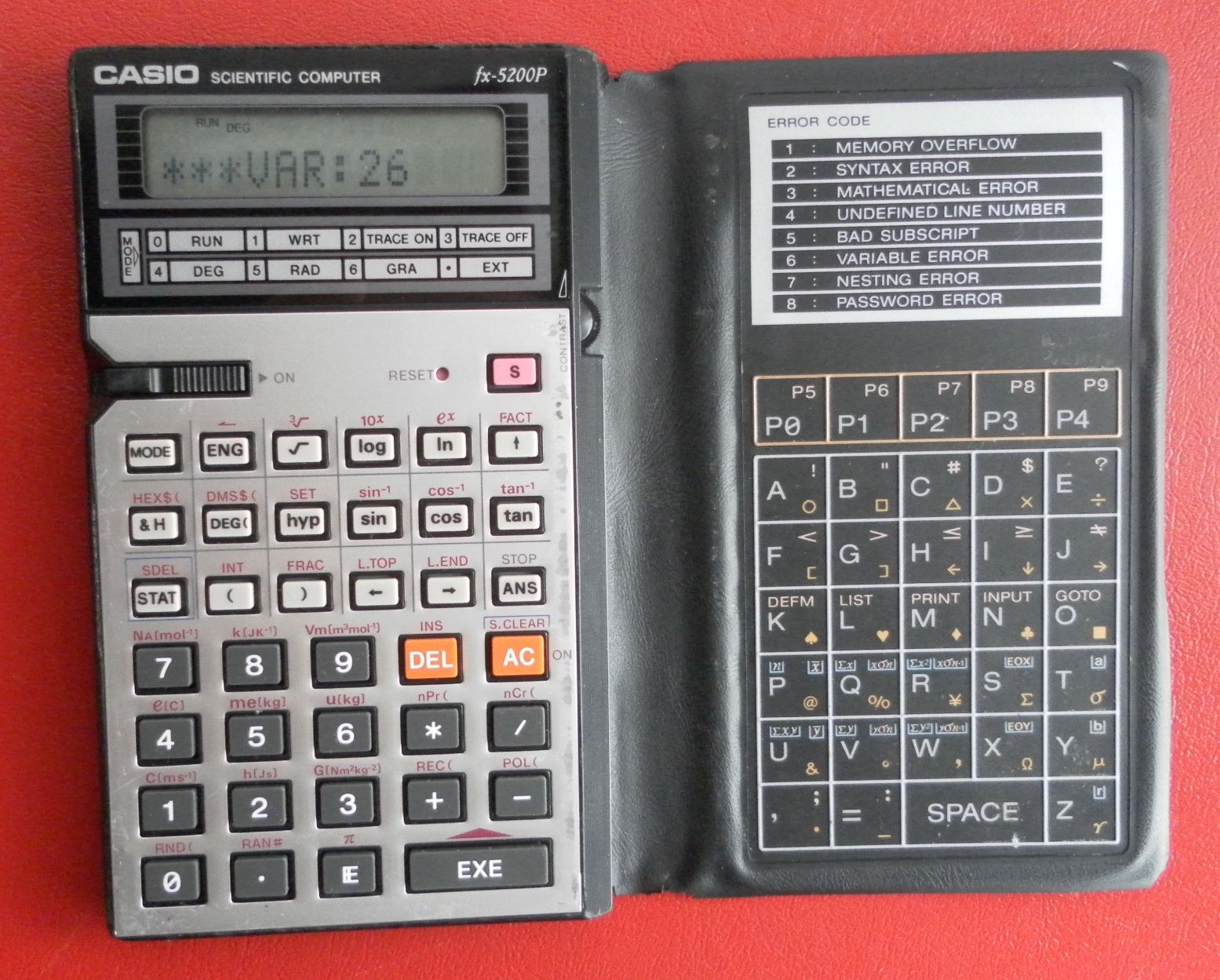Load Casio Fx-100 Calculator Manual
View and Download CASIO FX-100D manual online. FX-100D Calculator pdf manual download.
Casio Calculator Collector User Guides Manual Click to open in a new page OR right-mouse click and select 'save target as'. If you copy it, please mention this website as the source of the manual. (It takes a lot of time to scan this) jpg file (1.5MB) pdf file (5.6MB) pdf file (0.9MB) pdf file (0.2MB) pdf file (0.75MB) pdf file (0.23MB) pdf file (0.62MB) pdf file (0.56MB) pdf file (0.58MB) pdf file (0.9MB) pdf file (0.65MB) pdf file (1.94MB) pdf file (0.9MB) pdf file (0.76MB) pdf file (3.22MB) jpg file (1.18MB) jpg file (0.54MB) jpg file (0.39MB) jpg file (0.89MB) pdf file (22.4MB) pdf file (4.43MB) pdf file (2.08MB) pdf file (4.0MB).
- Office Manuals and free pdf instructions. Find the office and computer equipment manual you need at ManualsOnline.
- Are you looking for the the instruction manual of the Casio FX-100W? View the user manual of. Casio FX-100W manual. When you load it into the calculator.
. Chapter 1: Getting Ready This chapter acquaints you with CASIO Data Analyzer key operations, dis- play indicators, and other basic information you need to know. It also tells you how to replace batteries, connect to a graphic scientific unit, and perform other set up procedures before beginning actual operation. User’s Guide (this manual) EA-100 Probes The CASIO Data Analyzer comes with the following three probes. Voltage probe: for sampling of voltages within a range of 10V. Optical probe: for sampling of irradiance (radiant flux density) from 100 to 999.
Chapter 1: Getting Ready CASIO Data Analyzer Overview The CASIO Data Analyzer is a digital instrument you can use to sample and collect data on various everyday natural phenomena. The following sections provide information on using its probes and channels, and tell you how to connect to a graphic scientific calculator. Chapter 1: Getting Ready Command and Programs There are a total of 10 commands defined for this data analyzer unit: Com- mand 0 through Command 9. These commands can be used to specify such parameters as the type of data being sampled, the channel being used for sampling, the sample time, and the number of samples. Chapter 1: Getting Ready Data Filtering Static “noise” can sometimes cause sampled data to become corrupted, making it impossible to obtain accurate results from calculations and analy- sis. This data analyzer unit includes a data filtering system that eliminates noise and help to make sure that data is always accurate.
Keyboard The front panel of this data analyzer unit has a liquid crystal display screen and eight keys. Chapter 1: Getting Ready Key Functions The following describes the functions of each of the eight keys on the key- board. This section is intended more as a reference and contains information that may be difficult to understand at first glance. Don’t worry though, many of the expressions used in the following key function descriptions will be- come clearer after you read the section of this manual titled “Modes.”. Chapter 1: Getting Ready Description.
Data-Log Mode: Each press of CH-View in this mode sequentially switches the channel whose data is on the dis- play. The channel indicator of the currently selected chan- nel flashes on the screen. INTERNAL Pressing this key while in the Communications Mode enters the Internal Mode. Chapter 1: Getting Ready Reading the Display The data analyzer’s liquid crystal display (LCD) is divided among five areas, each of which indicates the status of a particular operation. Display Panel The display screen shows the current operating mode, the input/output chan- nel being used, and information about the current sampling operation.
Chapter 1: Getting Ready Area 3 (Sampling Status Area) The indicators in this area shows the current data sampling status. READY means the data analyzer is ready and standing by for data sampling, SAM- PLING indicates that a sampling operation is in progress, and DONE means that the sampling operation is finished.
Calculators

Chapter 1: Getting Ready. Voltage: Less than –10V. Temperature: Less than –20 C.
Light: Less than 100 Power Supply The data analyzer can be powered by four AA-size batteries or an optional AC adaptor (AD-A60024). This section tells you when you should replace batteries and how to connect the optional AC adaptor.
Support
Chapter 1: Getting Ready 2. Load four AA-size batteries into the battery compartment, making sure they are facing as shown in the illustration inside the battery compart- ment. After loading batteries, replace the battery compartment cover. Press ON/OFF to turn on power, which should make the screen shown below appear on the display. Chapter 1: Getting Ready. Never try to modify the power cord of the AC adaptor, do not allow it to become broken or cracked, and do not subject it to excessive bending, twisting, or pulling.

Do not place heavy objects on top of the power cord and do not subject it to direct heat. Chapter 1: Getting Ready Connecting the Data Analyzer to a Calculator The following procedure describes how to use the data communication cable that comes with the data analyzer to connect it to a CFX-9850G or CFX- 9800G graphic scientific calculator. Data communication cable (SB-62) 1. Chapter 1: Getting Ready Analog Input Channels CH1, CH2, and CH3 are analog input channels for connection of probes that measure electrical change. All three analog channels perform identical types of sampling.
Ultrasonic Input Channel This channel is for connection of a distance sensor that can be used to meas- ure the distance from the probe to an object.